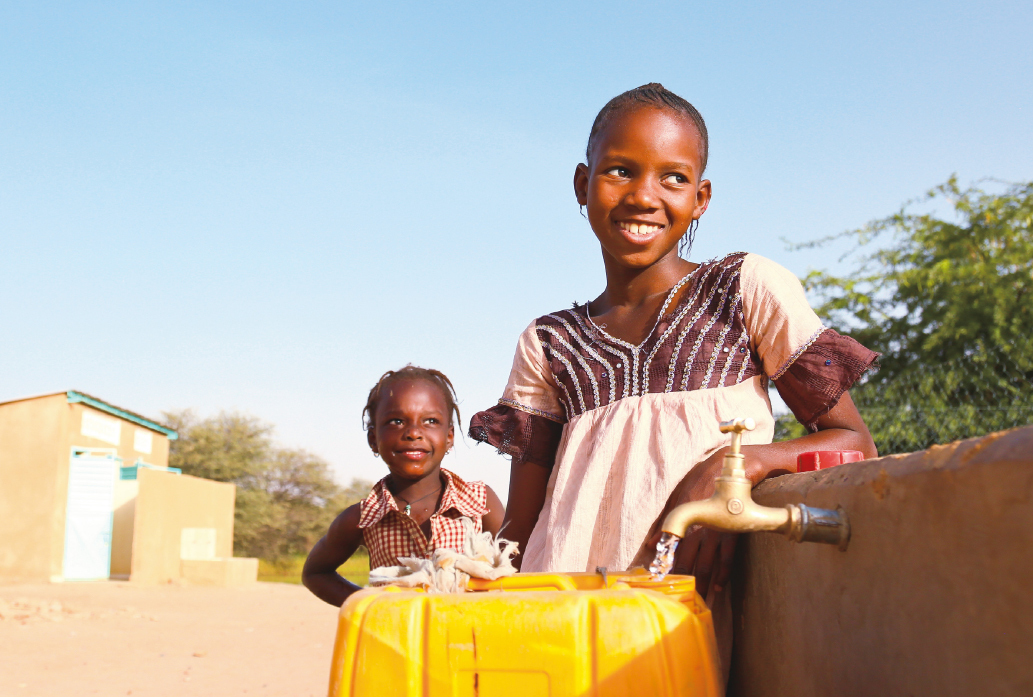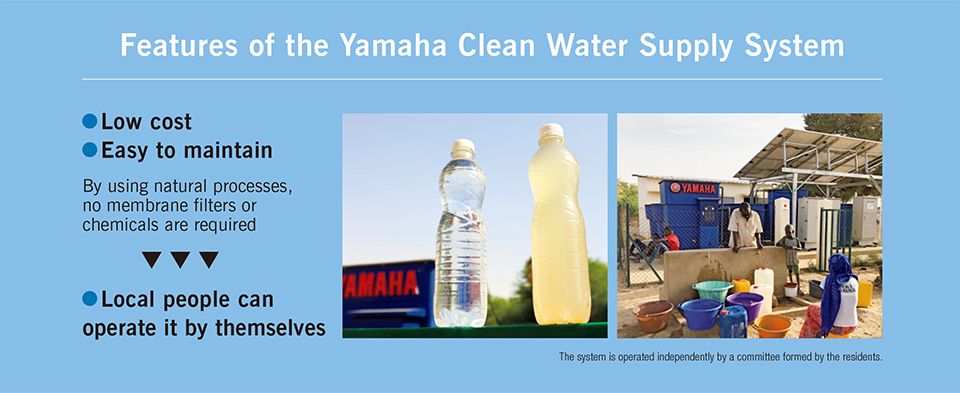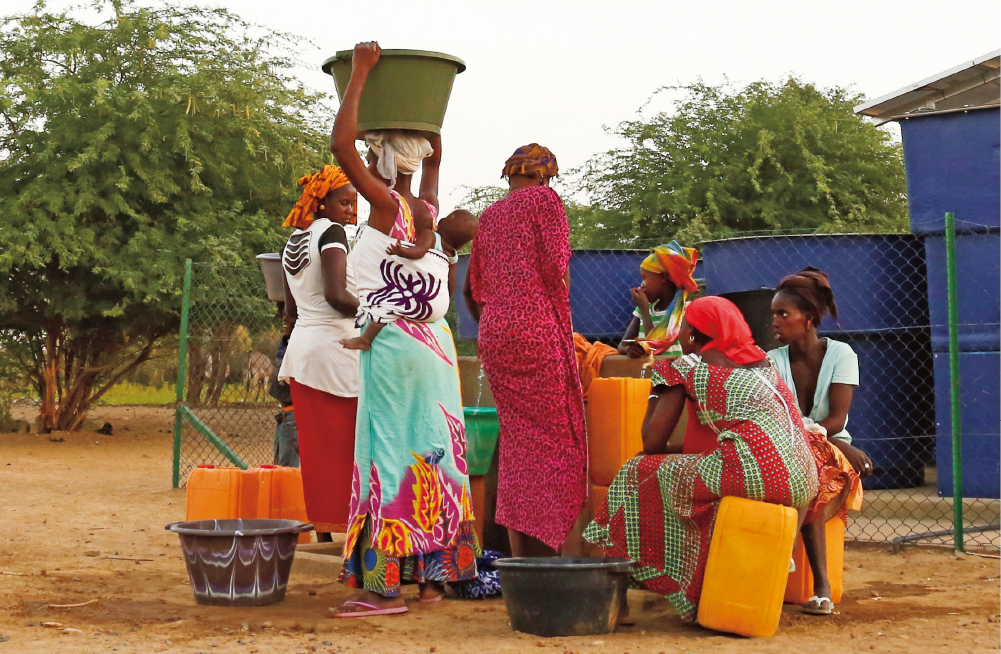A compact water purification system developed by Yamaha Motor, simple enough to be operated by the residents themselves, is changing life in Africa

Children now enjoy access to clean water, and their well-being is also improving.
There are 840 million people in the world who do not have access to safe drinking water, and they must obtain water from such sources as rivers, lakes, and poorly maintained wells. Half of those people are concentrated in African nations south of the Sahara (sub- Saharan Africa).
Japan has long been providing comprehensive water resources support in both knowhow and equipment, utilizing technology and experience. One example is Yamaha Motor Co., Ltd., which has been promoting “safe, clean water for everyone” and deploying water purification systems in Africa and Asia. The company has developed a simple system that utilizes a traditional technique called “slow sand filtration.”
Introduction of the water purification system to Africa began in 2011, with the installation of a system for a village on the outskirts of the city of Saint-Louis in northwest Senegal. Unlike inland areas, the Senegal River is nearby, and the region was late in bene ting from support services.

The Yamaha Clean Water Supply System produces safe water at the rate of 8,000 liters per day, which meets the needs of approximately 2,000 people. The greatest urgency for meeting water needs is in poor agricultural communities, and the system permits simple daily maintenance at a sustainably low cost for such regions. The system utilizes gravity in a way that reduces electrical consumption.
Masashi Kanemaru, Yamaha Motor’s Clean Water Project Group supervisor, says, “Our role does not end with installation; we want to contribute to the region over the medium and long term. The key to this is ownership by the residents. A model for self-administration by the residents is in place, and rather than being available for free, a fee is levied for the water. The program allows them to build up the funds for offsetting periodic maintenance expenses.”
Thanks to clean drinking water, the villagers’ health has improved and the village is slowly becoming more prosperous. For women and children who had been accustomed to carrying water from distant water sources, more time is now available for agricultural work or commuting to school. As the news of the village with clean water gradually spread, more people started migrating from nearby areas, and new schools have been built.


Women accustomed to fetching water from distant sources can now use that time in other ways.
In 2018, under an aid grant from the Japanese government, 10 more systems were installed in Senegal. This is a concrete expression of the pledge made by the Japanese government at TICAD V, to provide grants to “improve access to safe water and sanitary conditions for 10 million people.” As of June 2019, 21 systems have been installed in eight African countries.
Ensuring access to safe water is an objective of SDGs (Sustainable Development Goals). Water is also indispensable for eliminating poverty and improving health, which are also SDGs. Providing safe water in close association with the local residents supports younger generations who are responsible for the future.





























